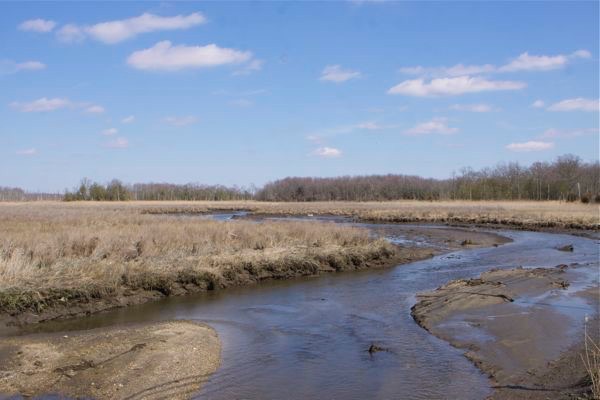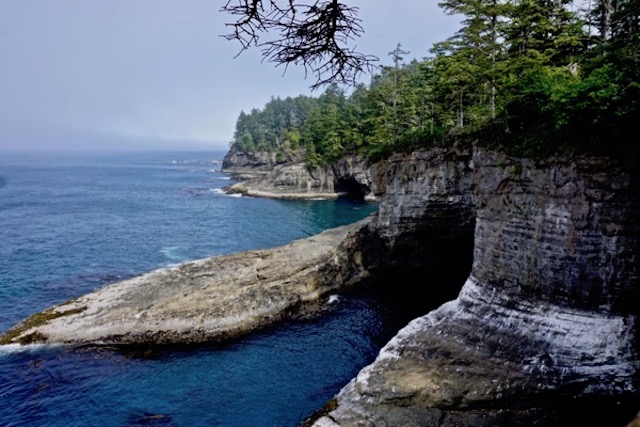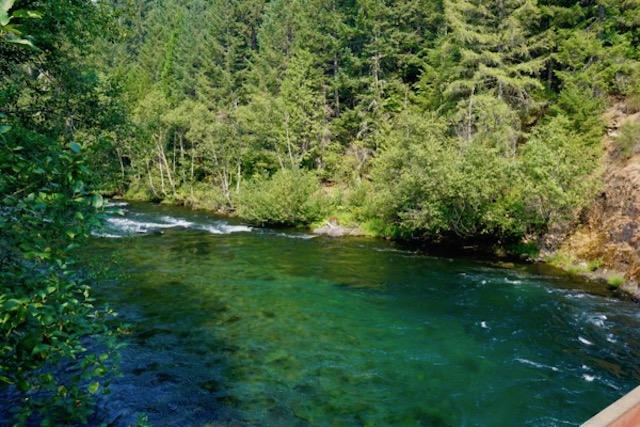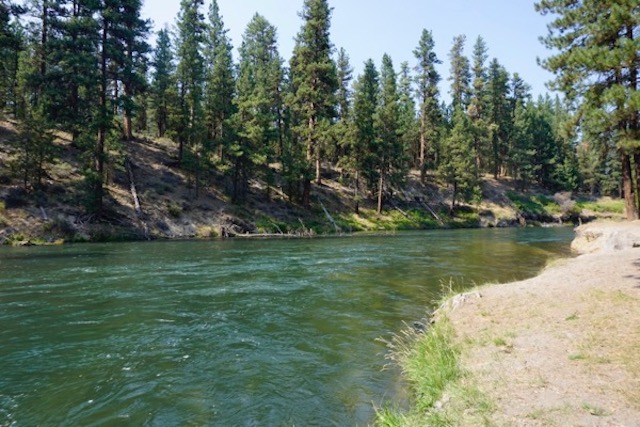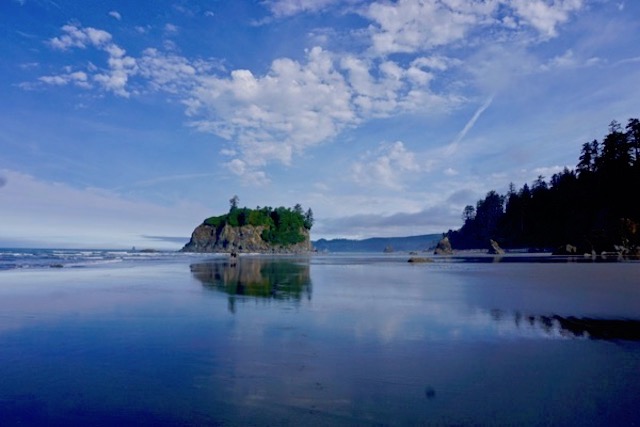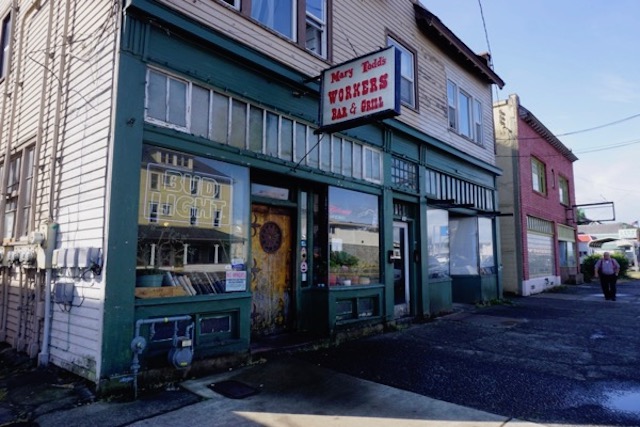Life On The Delaware – Summertime and the Livin’ Is Easy
Summertime, and the livin’ is easy
Fish are jumpin’ and the cotton is high
Oh, your daddy’s rich and your ma is good-lookin’
So hush, little baby, don’t you cry
One of these mornings you’re gonna rise up singing
And you’ll spread your wings and you’ll take to the sky
But till that morning, there ain’t nothin’ can harm you
With daddy and mammy standin’ by ~~~ listen to the Ella Fitzgerald version
The Foundation funding is driving the agenda and the agenda is corporate
[Update below]
On Friday, NJ Spotlight and sister Pennsylvania based media State Impact held a conference on threats to the Delaware River watershed – “Protecting Today and Tomorrow” – see the NJ Spotlight story today for an overview.
The event was sponsored by, among others, the Wm. Penn Foundation.
Wm. Penn also funds NJ Spotlight, at least one of the groups on the event panel, and on top of all that, Wm. Penn funds a major $35 million grant program in the Delaware River watershed.
The world’s largest toxic corporate polluter, Dupont, also funds a Delaware Estuary program – with the Orwellian title “Clear Into The Future” – and a group mentioned in the NJ Spotlight coverage. Of course, Dupont does not fund science and regulation to hold them accountable for the toxic pollution of the river and bay.
NJ DEP also funds one of the groups on the NJ Spotlight panel.
There are so many conflicts of interest and ethical challenges it is hard to know where to begin.
Of course, none of all that was mentioned in the event coverage by Spotlight.
The reason I even mention this stuff, aside from the ethical issues involved, is because the Wm. Penn, Dupont, and NJ DEP funding comes with huge strings attached – implied or overt – that divert so called watershed protection groups away from controversial and costly science based regional planning and regulatory tools and instead fund work on alternative voluntary and incentive based projects.
The funding is driving the agenda and the agenda is corporate.
I wrote about all that in this 2014 post:
Since then, the problems I wrote about have all gotten much worse. The only good thing is the anti-fracking campaigns, but even that good advocacy work is mis-focused on FERC instead of State regulatory powers under the Clean Water Act, while it has consumed virtually all resources to wage other battles.
Now Wm. Penn and Dodge Foundations have bought media coverage and sponsors policy conferences that frame the issues and set the advocacy and policy agenda.
Those “protecting” the river have virtually abanded the regulatory tools under the Clean Water Act that have protected the river and need strengthening, including antidegradation policy, NPDES permits and the TMDL program.
Instead those Foundation funded groups focus on feel good measures and politically safe voluntary measures and incentives. Look no further than the Wm. Penn Delaware initiative for a crystal clear example of that corporate market based model as a diversion from traditional regulatory enforcement.
Worse some take funds fron major toxic polluters like DuPont and state regulatory agencies that they are supposed to be holding accountable. See Dupont’s “Clear Into The Future” program for a very cynical manipulation of the science and policy agendas – including co-opting conservation groups.
A detailed regulatory strategy to protect the watershed was funded by and submitted to Penn Foundation. But they abandoned it. See the above 2014 post for a copy of that strategy and details on all that.
Instead of funding the implementation of the strategy Penn provide grant funding to develop, they ran away from that controversial regulatory agenda and instead funded their $35 million voluntary incentive feel good program.
I submitted a proposal to develop a regional planning scheme for the Bayshore to Dodge Foundation but they declined to fund it. Chris Dagett at Dodge told me to work with ineffective local groups on local voluntary programs and incentives, not a Pinelands modeled regional planning and regulatory scheme to really protect the Delaware Bayshore.
I somehow doubt that any of the esteemed – and well fed – panelists mentioned any of all that.
And for that fealty, the livin’ will remain easy
With daddy and mammy standin’ by
[Update: NJ Spotlight reports that the Delaware River is “healthy”.
That is false.
Any river that is poisoned with chemicals produce “dual-sexed fish” is not healthy.
But, of course, NJ pharmaceutical and chemical corporations don’t want the media, the public and regulators to focus on the endocrine disputing chemicals they manufacture. And NJ Spotlight goes right along with that suppression.
Furthermore, under the federal Clean Water Act, State’s are required to assess the health of surface waters. NJ DEP has determineded that the Delaware fails to meet water quality standards and is legally impaired. NJ DEP (and others) have issued fish consumption advisories due to toxic mercury and PCB’s. There is a TMDL underway in Delaware Bay ad the lower Delaware.
These inconvenient facts are also ignored by Spotlight ad the “river protectors”. ~~~ end update]
[End note: After I wrote this, I just went to read Chris Hedges’ weekly column at Truthdig. Of course, Hedges says what I’m driving at much better: (read the complete column)
These dissidents, if we had a functioning public broadcasting system or a commercial press free of corporate control, would be included in the mainstream discourse. They are not bought and paid for. They have integrity, courage and often brilliance. They are honest. For these reasons, in the eyes of the corporate state, they are very dangerous.
The first and deadliest salvo in the war on dissent came in 1971 when Lewis Powell, a corporate attorney and later a Supreme Court justice, wrote and circulated a memo among business leaders called “Attack on American Free Enterprise System.” It became the blueprint for the corporate coup d’état. Corporations, as Powell recommended in the document, poured hundreds of millions of dollars into the assault, financing pro-business political candidates, mounting campaigns against the liberal wing of the Democratic Party and the press and creating institutions such as the Business Roundtable, The Heritage Foundation, the Manhattan Institute, the Cato Institute, Citizens for a Sound Economy, the Federalist Society and Accuracy in Academia. The memo argued that corporations had to fund sustained campaigns to marginalize or silence those who in “the college campus, the pulpit, the media, and the intellectual and literary journals” were hostile to corporate interests.
